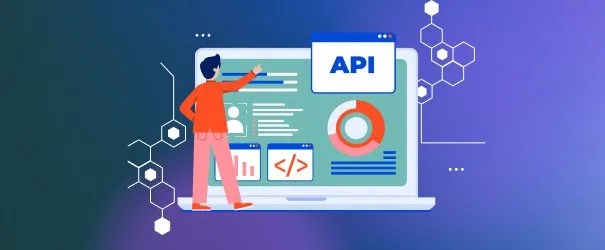The Role of APIs in Modern Web Development
Introduction to APIs
An Application Programming Interface (API) is a collection of rules and protocols that enable different software applications to interact and communicate with one another. APIs specify the methods and data formats that applications should use to request and exchange information. They enable software components to interact seamlessly, fostering integration and enhancing functionality.Brief History and Evolution of APIs
APIs have been around since the early days of computing, but their role has significantly evolved. Initially, APIs were used for system-level interactions, allowing different parts of a computer system to communicate. With the advent of the internet and web development, APIs became more sophisticated, enabling web-based applications to interact with each other. The evolution of APIs can be traced back to the 1960s with RPC (Remote Procedure Call) and continued with technologies like CORBA (Common Object Request Broker Architecture) in the 1980s. The 2000s saw the rise of web APIs with SOAP (Simple Object Access Protocol) and later REST (Representational State Transfer), which became the standard for modern web APIs due to its simplicity and scalability.Importance and Relevance of APIs in Modern Web Development
APIs are crucial in modern web development for several reasons:- Interoperability: They enable different systems to work together, regardless of their underlying technologies.
- Scalability: APIs allow developers to build modular applications that can be scaled independently.
- Efficiency: They enable the reuse of existing functionalities, reducing development time and costs.
- Innovation: APIs open up opportunities for developers to create new applications by leveraging existing services.
Types of APIs
- Web APIs: These are used for communication between web servers and clients, typically over HTTP/HTTPS. Examples include REST and GraphQL APIs.
- Library APIs: These are provided by software libraries, allowing developers to use predefined functions and procedures within their applications.
- Operating System APIs: These APIs allow software applications to interface with the operating system, including interactions with file systems and processes.
- Database APIs: These allow applications to interact with database management systems, enabling CRUD (Create, Read, Update, Delete) operations.
- Hardware APIs: These enable software applications to interact with hardware devices, such as printers, cameras, and sensors.
How APIs Work
APIs function as intermediaries between different software applications. Here’s a basic overview of how APIs work:- Request: A client application makes a request to the API, typically using HTTP methods (GET, POST, PUT, DELETE).
- Processing: The API receives the request and processes it. This might involve querying a database, calling another API, or performing some computation.
- Response: The API sends a response back to the client, usually in a structured format like JSON or XML.
Benefits of Using APIs
APIs offer numerous benefits in web development:- Modularity: APIs allow applications to be broken down into smaller, reusable components.
- Integration: They enable different systems to work together, facilitating data exchange and functionality sharing.
- Automation: APIs can automate tasks by allowing applications to interact without human intervention.
- Innovation: By leveraging existing APIs, developers can build new applications and services more quickly and efficiently.
- Scalability: APIs enable developers to scale applications by adding new functionalities or integrating with other services without overhauling the entire system.
API Design and Best Practices
Designing APIs involves several best practices to ensure they are efficient, reliable, and easy to use:- Clear and Consistent Naming: Use intuitive and consistent naming conventions for endpoints and parameters.
- Versioning: Implement versioning to manage changes and ensure backward compatibility.
- Documentation: Provide comprehensive documentation to help developers understand and use the API effectively.
- Security: Implement robust security measures, including authentication, authorization, and data encryption.
- Rate Limiting: Use rate limiting to prevent abuse and ensure fair usage among clients.
- Error Handling: Provide clear and informative error messages to help developers diagnose and fix issues.
Challenges and Considerations
Security Concerns and How to Mitigate Them
Security is a critical concern in API development. Common security challenges include unauthorized access, data breaches, and injection attacks. Mitigation strategies include:- Authentication: Use strong authentication mechanisms like OAuth or API keys to verify the identity of API users.
- Encryption: Use HTTPS to encrypt data in transit and ensure secure communication.
Handling API Rate Limits and Quotas
Rate limiting is crucial to prevent abuse and ensure fair usage. Strategies include:- Fixed Window: Limits the number of requests in a fixed time period.
- Sliding Window: Uses a moving window to calculate request limits dynamically.
- Token Bucket: Allocates a fixed number of tokens that replenish over time, allowing burst requests up to a certain limit.
Ensuring Reliable and Consistent Performance
API performance is vital for user experience. Strategies to ensure reliability and performance include:- Caching: Use caching mechanisms to store frequently accessed data and reduce load on the server.
- Monitoring and Logging: Implement monitoring and logging to track performance metrics and identify issues promptly.
- Redundancy: Use redundancy and failover mechanisms to ensure high availability and minimize downtime.








